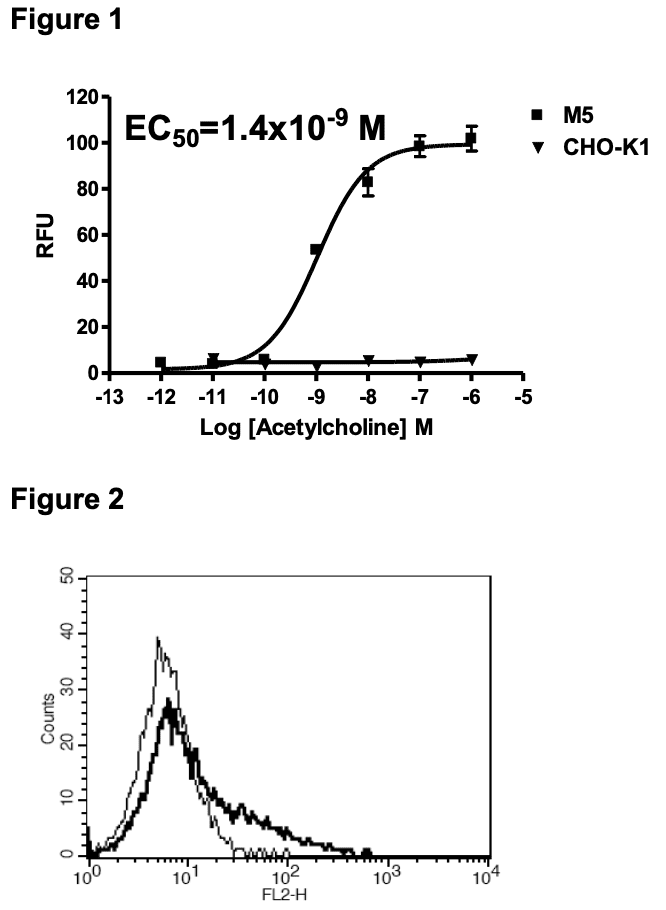Product Information
Catalog Number:
C1026-1
Lot Number:
C1026-1-051209
Quantity:
1 vial (2 x 106) frozen cells
Freeze Medium:
Sigma Freezing Medium (C-6164)
Host cell:
CHO-K1
Transfection:
Expression vector containing full-length human CHRM5 cDNA (GenBank accession Number NM_012125) with FLAG tag sequence at N-terminus
Recommended Storage:
Liquid nitrogen upon receiving
Propagation Medium:
DMEM/F12, 10% FBS, 10 μg/mL puromycin
Stability:
Stable in culture for minimum of two months
Data Sheet
Background: The muscarinic M5 receptor is a 532-amino acid 7-transmembrane protein. Acetylcholine, a potent dilator of most vascular beds, virtually lost the ability to dilate cerebral arteries and arterioles in M5 -/- mice, suggesting that endothelial M5 receptors mediate this activity in wild-type mice. M5 receptors located on dopaminergic nerve terminals play a role in facilitating muscarinic agonist-induced dopamine release in the striatum. Both somatic and affective components of naloxone-induced morphine withdrawal symptoms were significantly attenuated in M5 -/- mice. M5 receptor activity modulates both morphine reward and withdrawal processes, suggesting that M5 receptors may represent a novel target for the treatment of opiate addiction.
Application: Functional assays

Figure 1. Dose-dependent stimulation of calcium flux upon treatment with ligand, measured with MultiscreenTM Calcium 1.0 No Wash Assay Kit (Multispan MSCA01). Figure 2. Receptor expression on cell surface measured by flow cytometry (FACS) using an anti- FLAG antibody. Thin line: parental cells; thick line: receptor-expressing cells. Thin line: parental cells; thick line: receptor-expressing cells.
References:
Basile et al. (2002) Deletion of the M5 muscarinic acetylcholine receptor attenuates morphine reinforcement and withdrawal but not morphine analgesia. Proc Natl Acad Sci USA 99:11452-11457.
Yamada et al. (2003) Novel insights into M5 muscarinic acetylcholine receptor function by the use of gene targeting technology. Life Sci 74:345-353.
